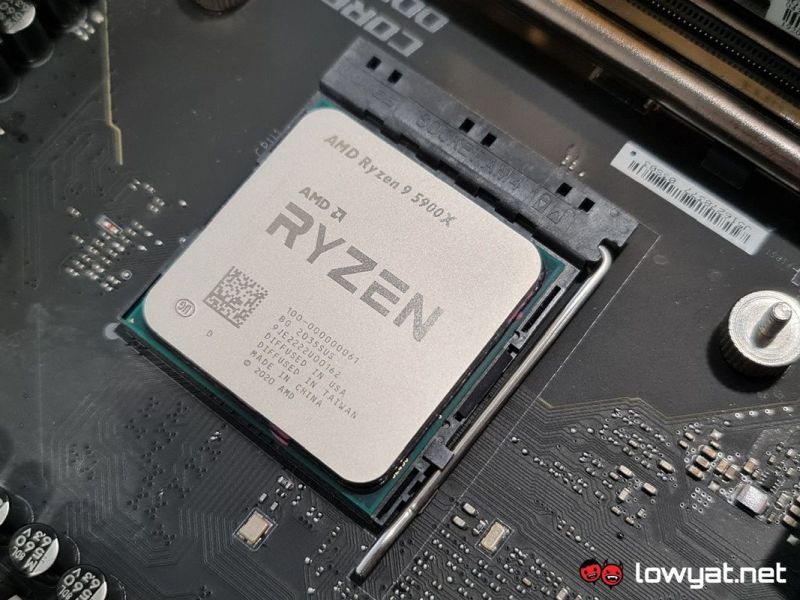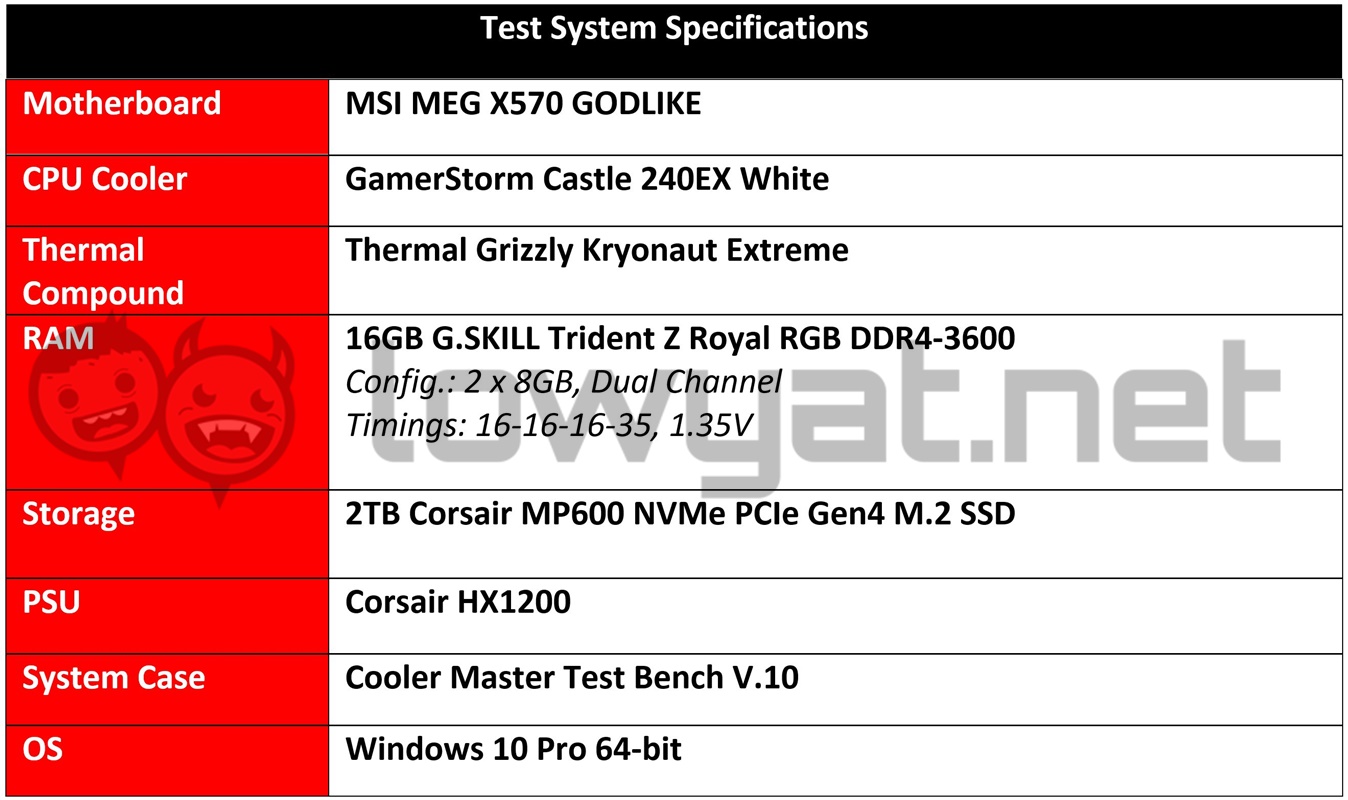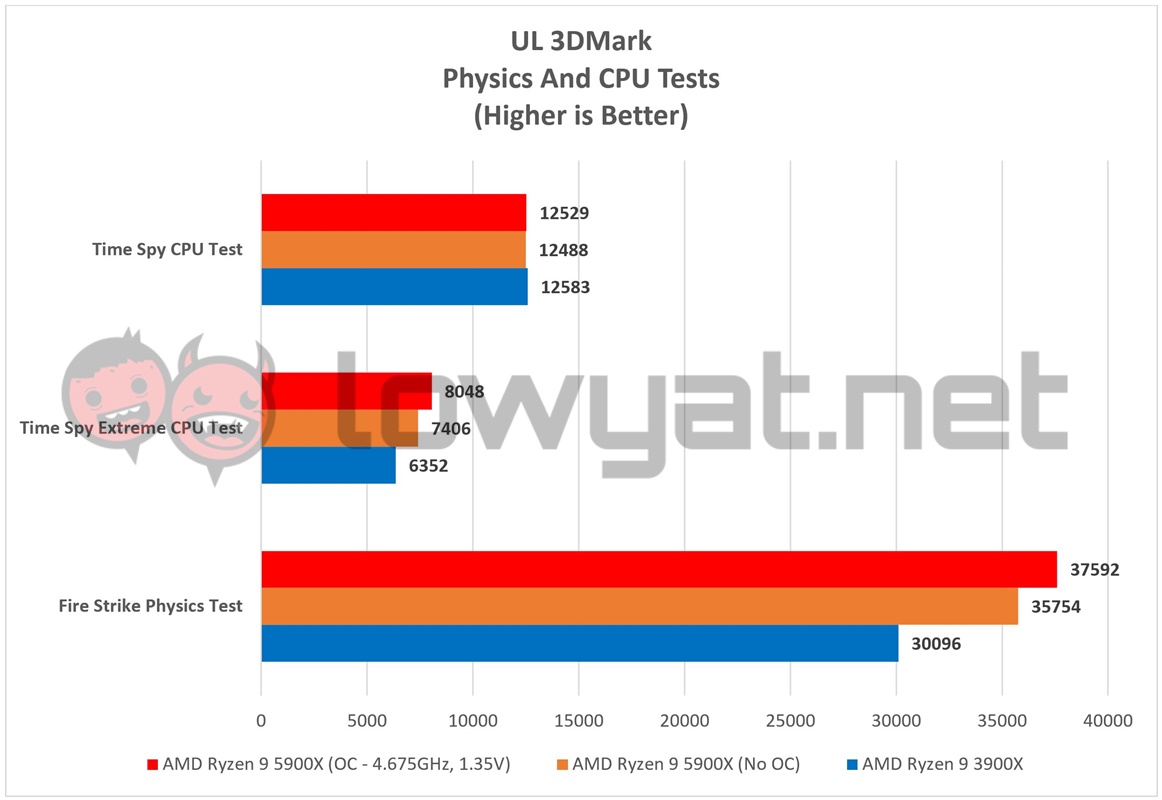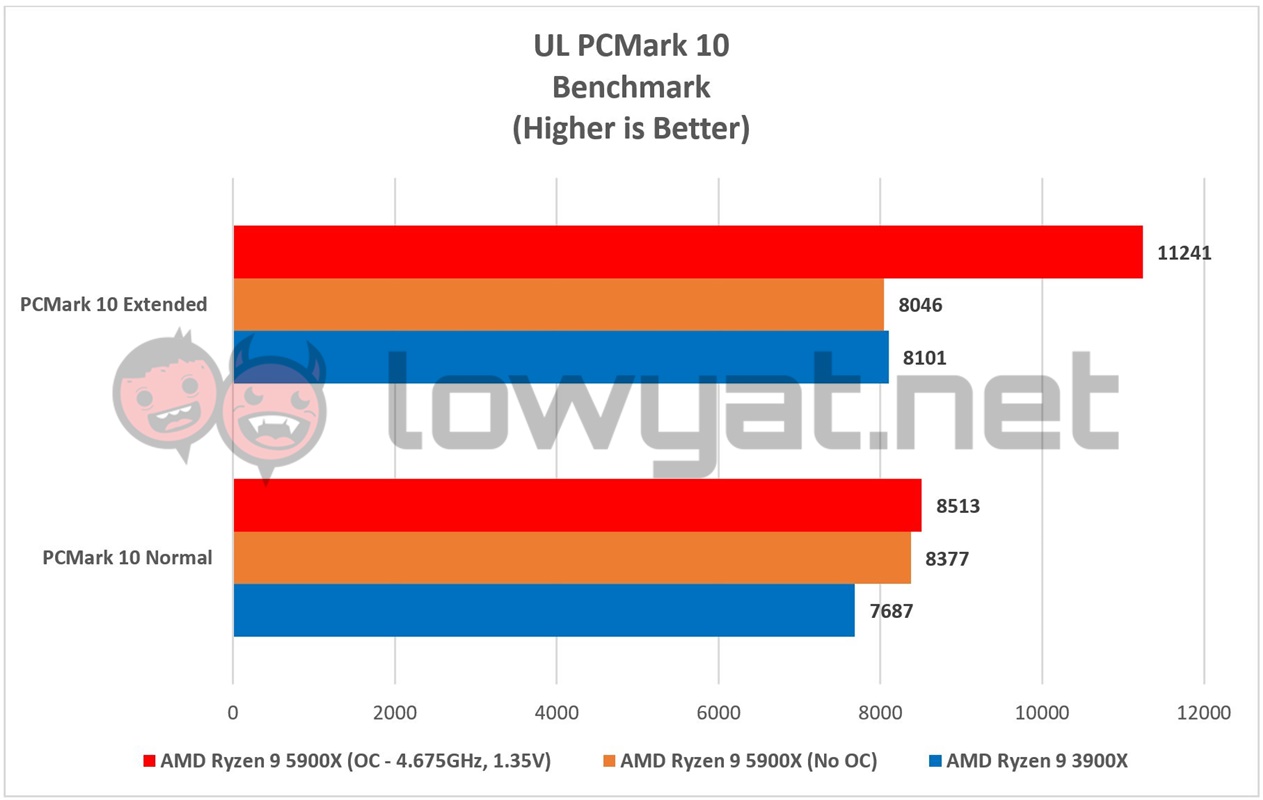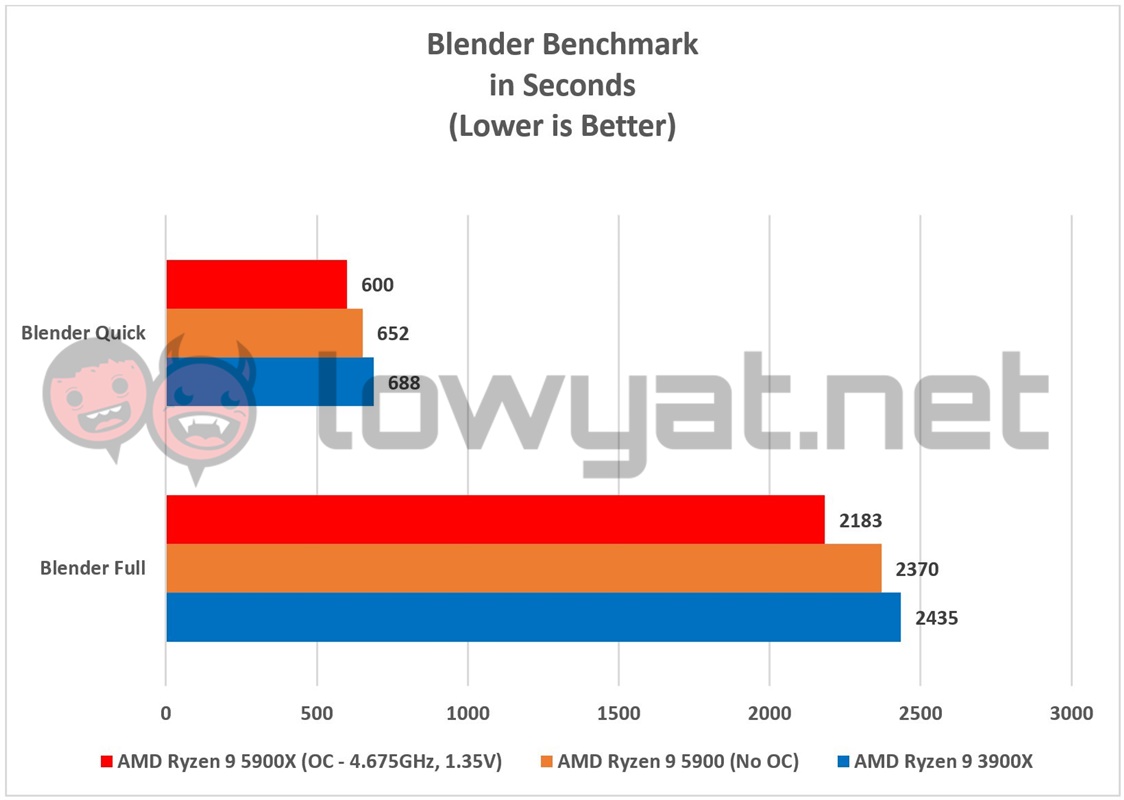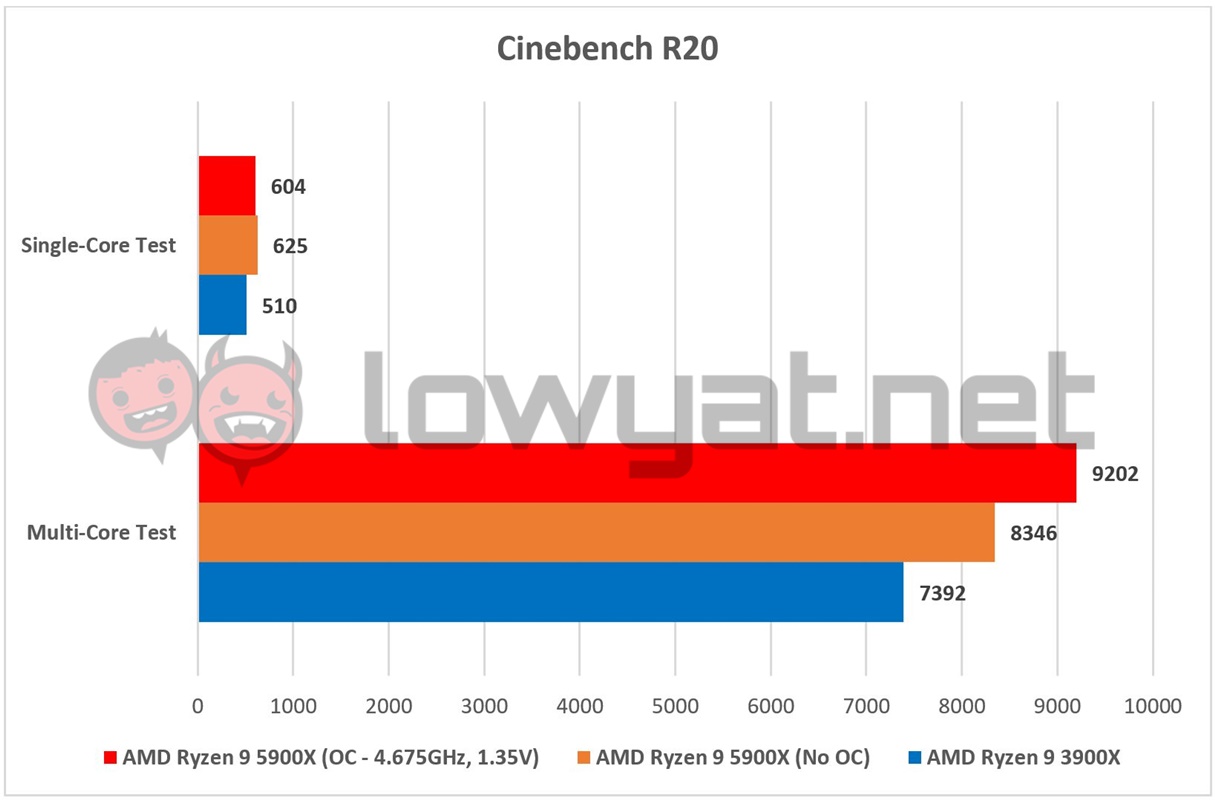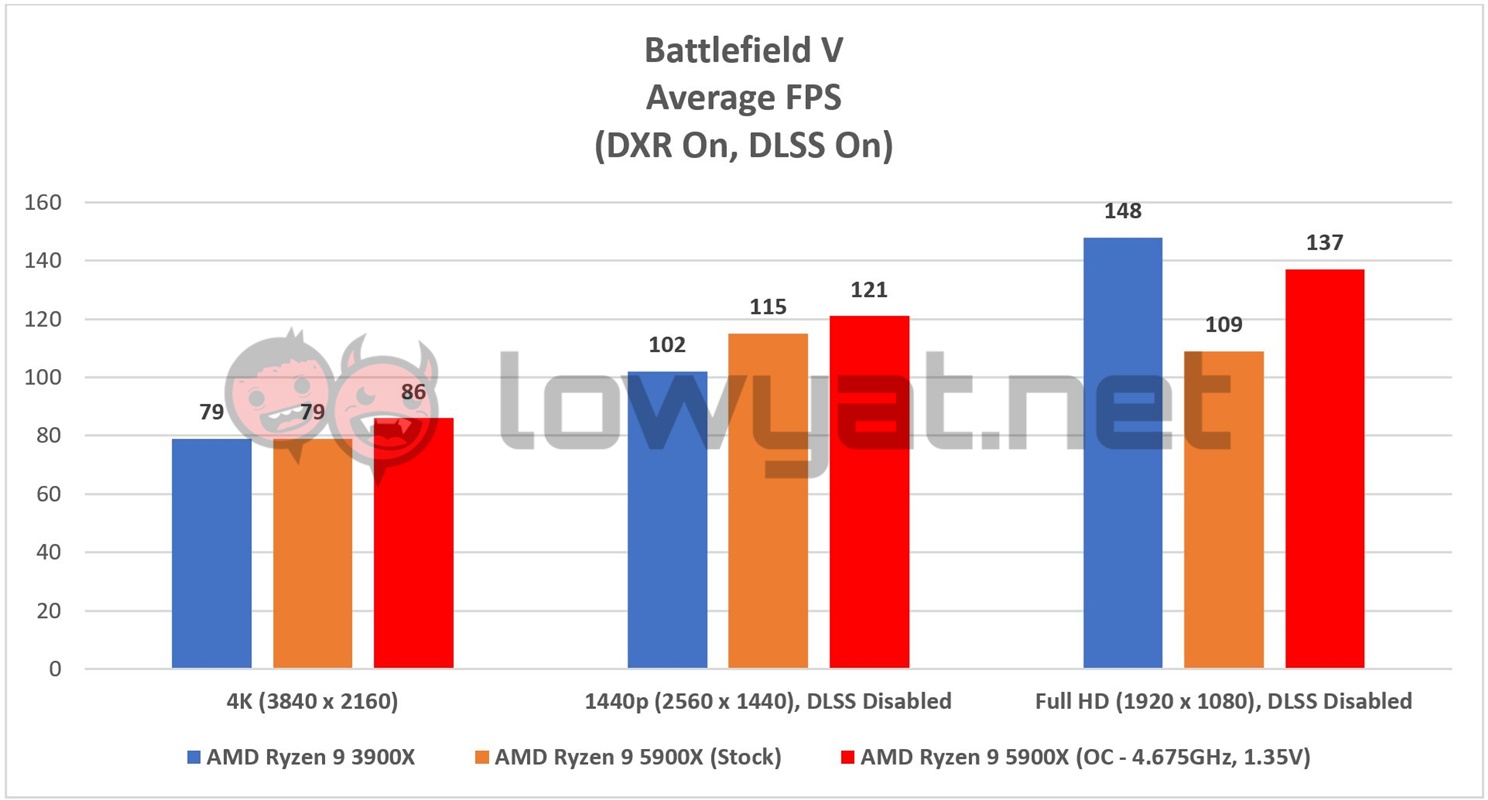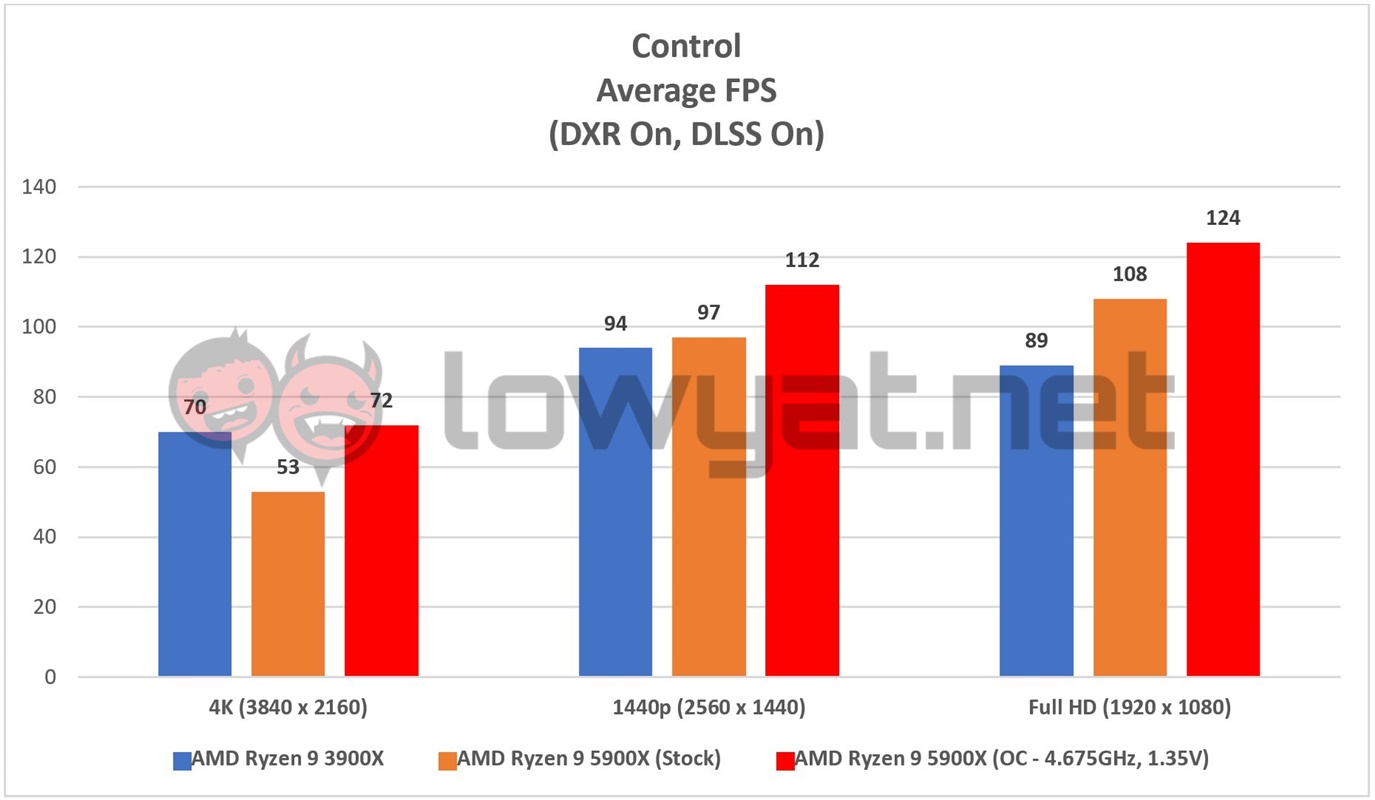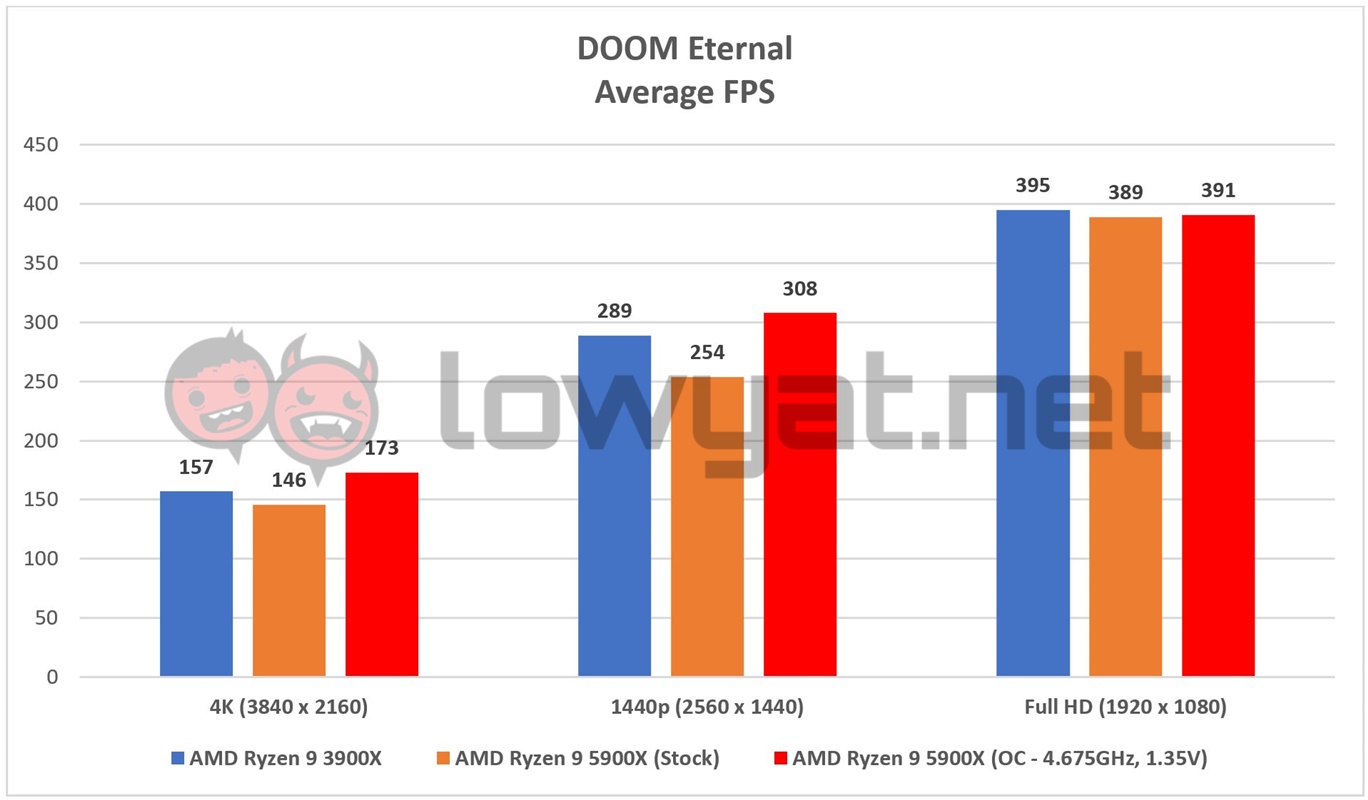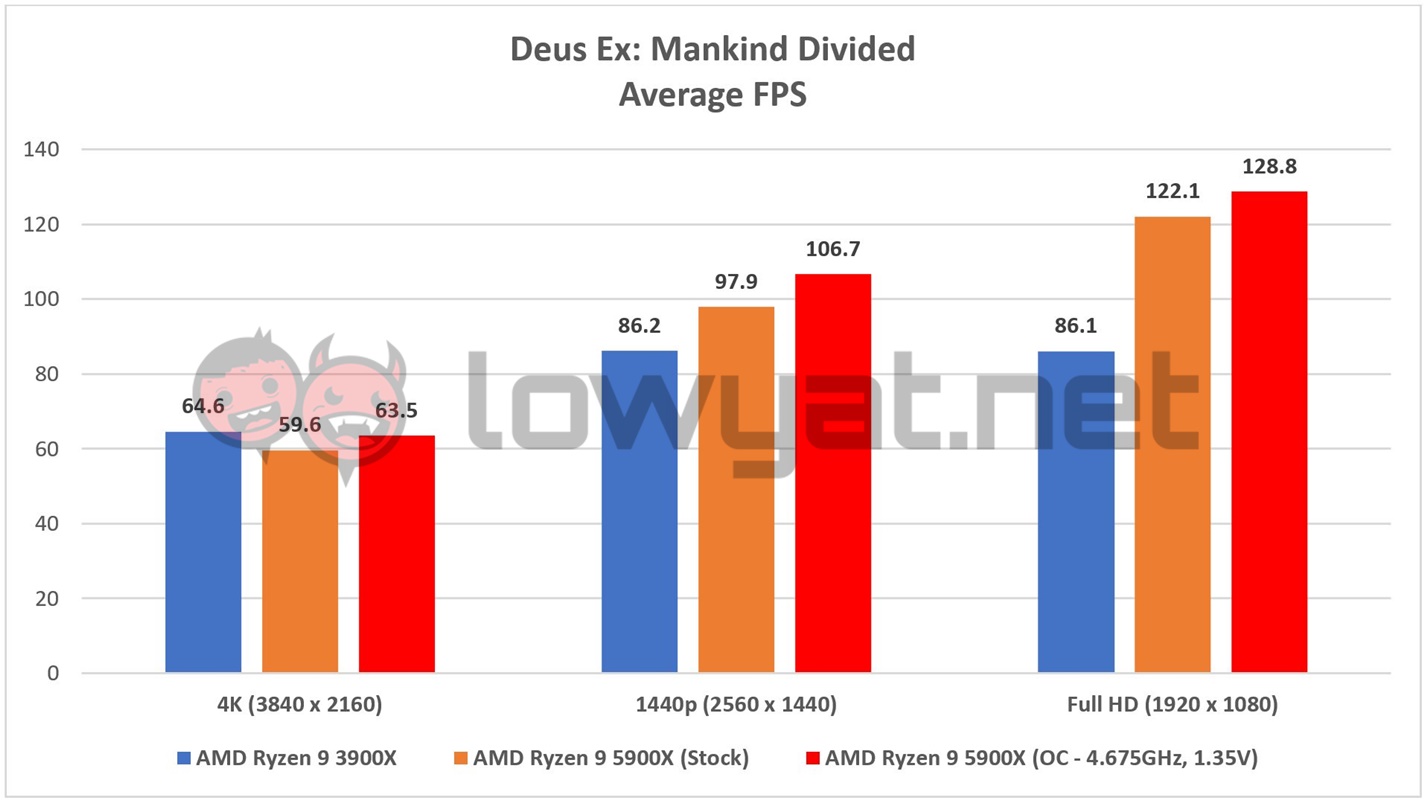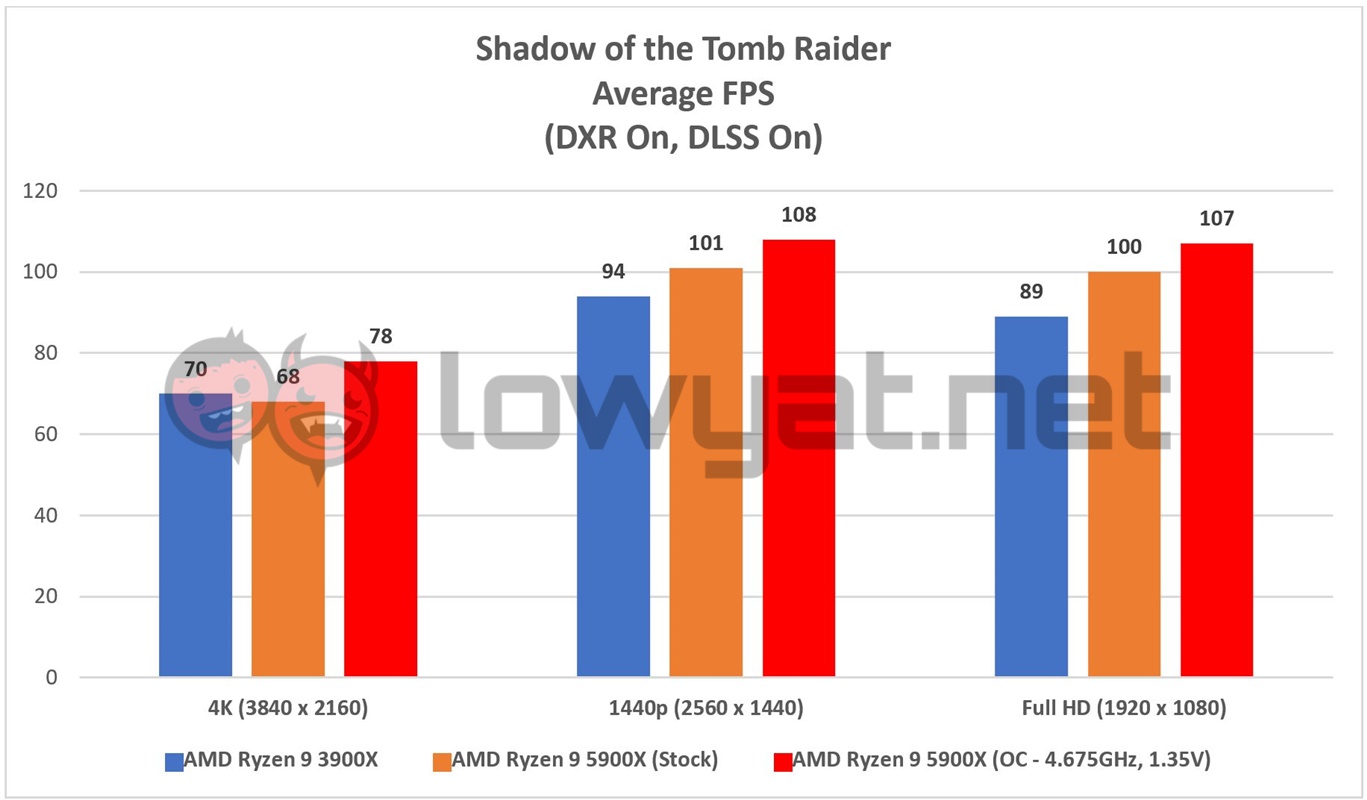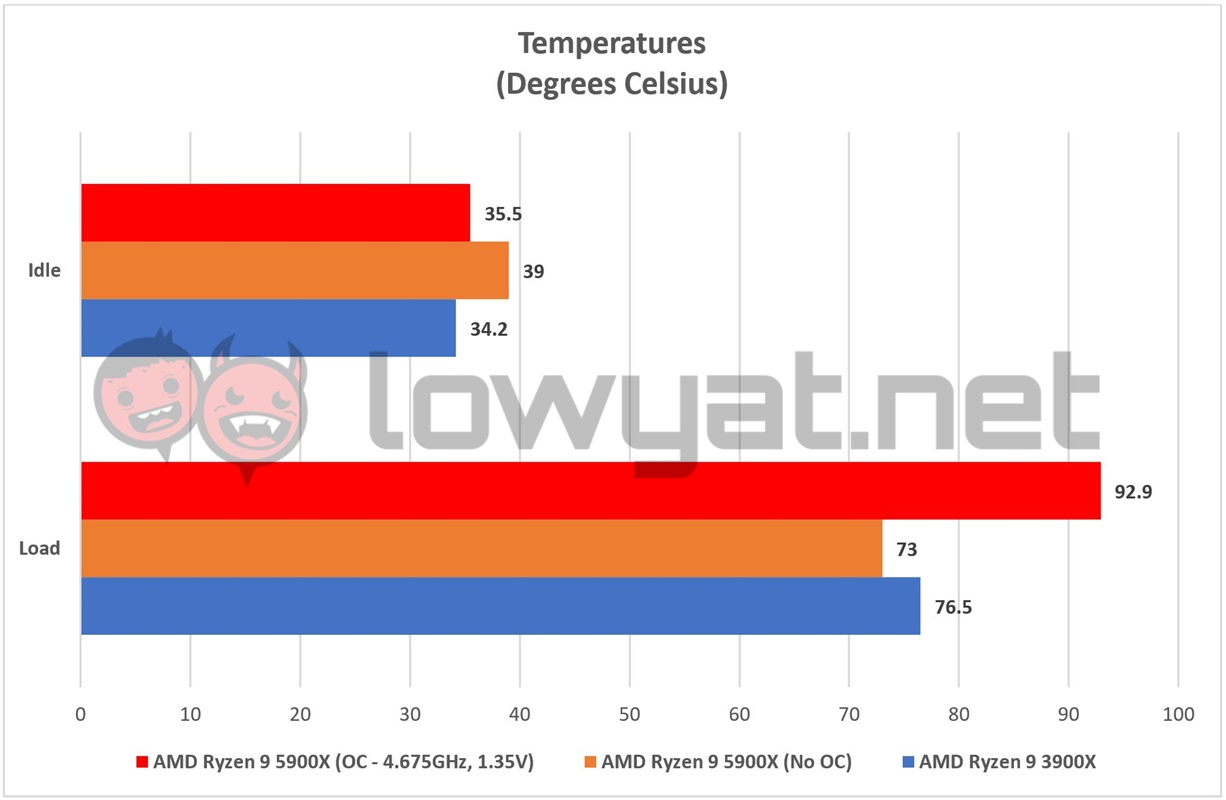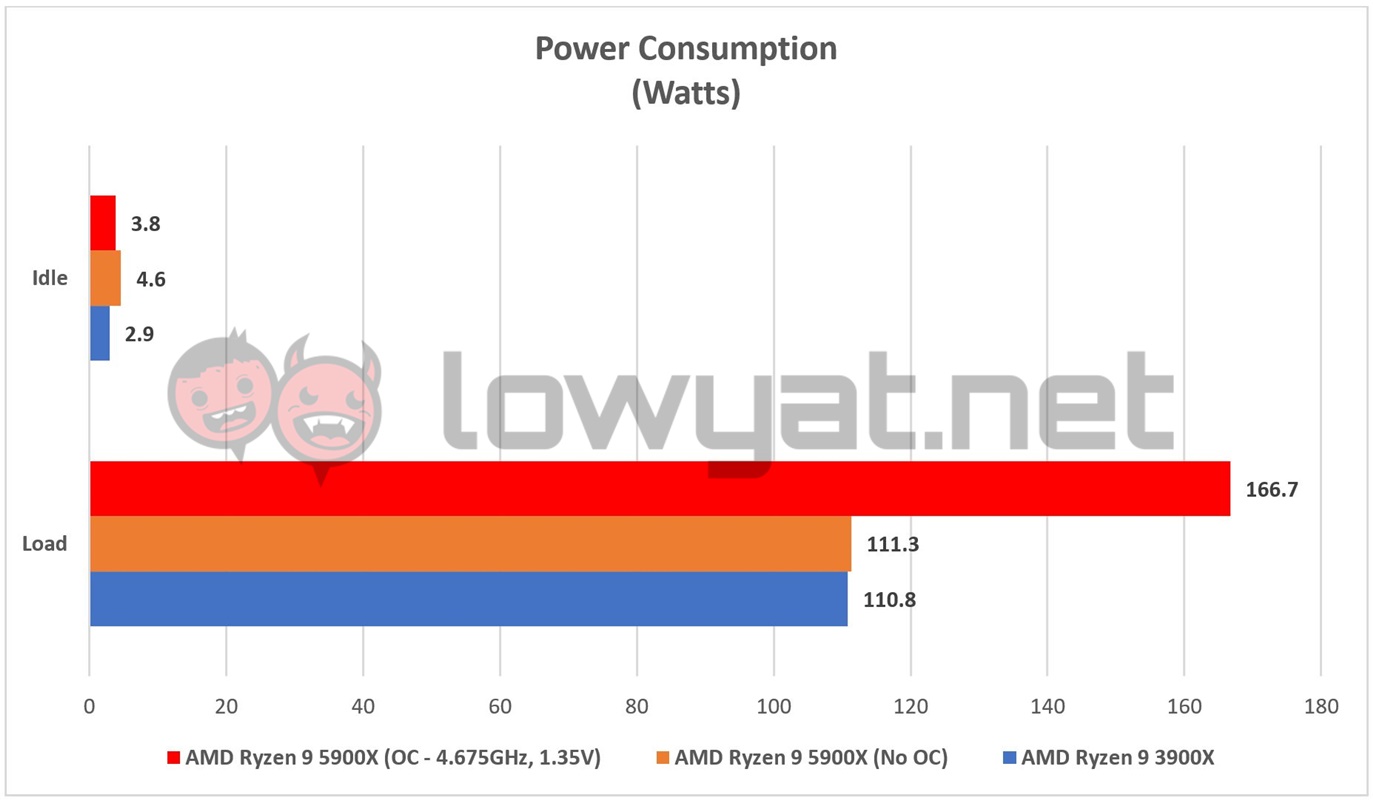AMD’s Ryzen 5000 series CPUs are finally here and much like its Ryzen 3000 series, the new processor lineup has given the company additional ammunition to sustain its assault on Intel and its current 10th generation desktop CPU lineup. Armed with its new Zen 3 architecture across the board, it’s clear that the CPU maker isn’t making it easy for its rival.
In this review, I take a look at AMD’s 2nd most powerful CPU in the lineup, the Ryzen 9 5900X, and see if this particular CPU is worth its RM2499 asking price.
Specifications
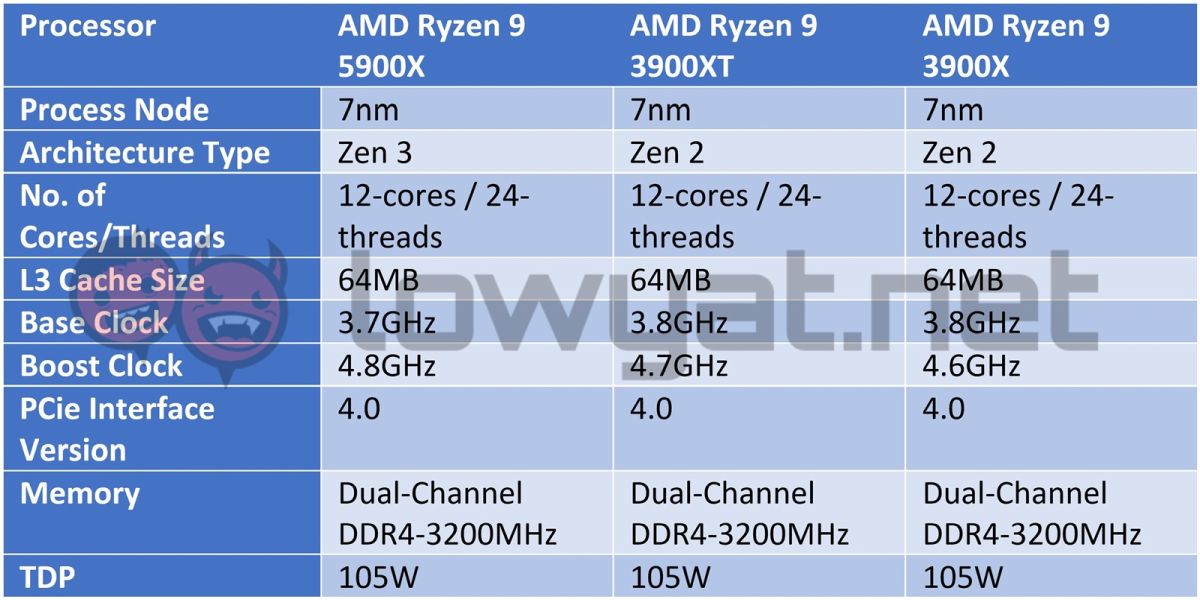
On paper, the general specifications of the 5900X doesn’t actually look any different from its direct predecessors, the 3900X and its ever so slightly more powerful 3900XT. Dig a little deeper, though, and you’ll find that, despite sharing the same 7nm die lithography, AMD has clearly made some improvements in the Zen 3 architecture.
As per its announcement, the 5900X and all its siblings offers up to 19% more instructions per clock (IPC) than its predecessors and around 2.4 times more performance per watt than Zen 2. More about the latter later.
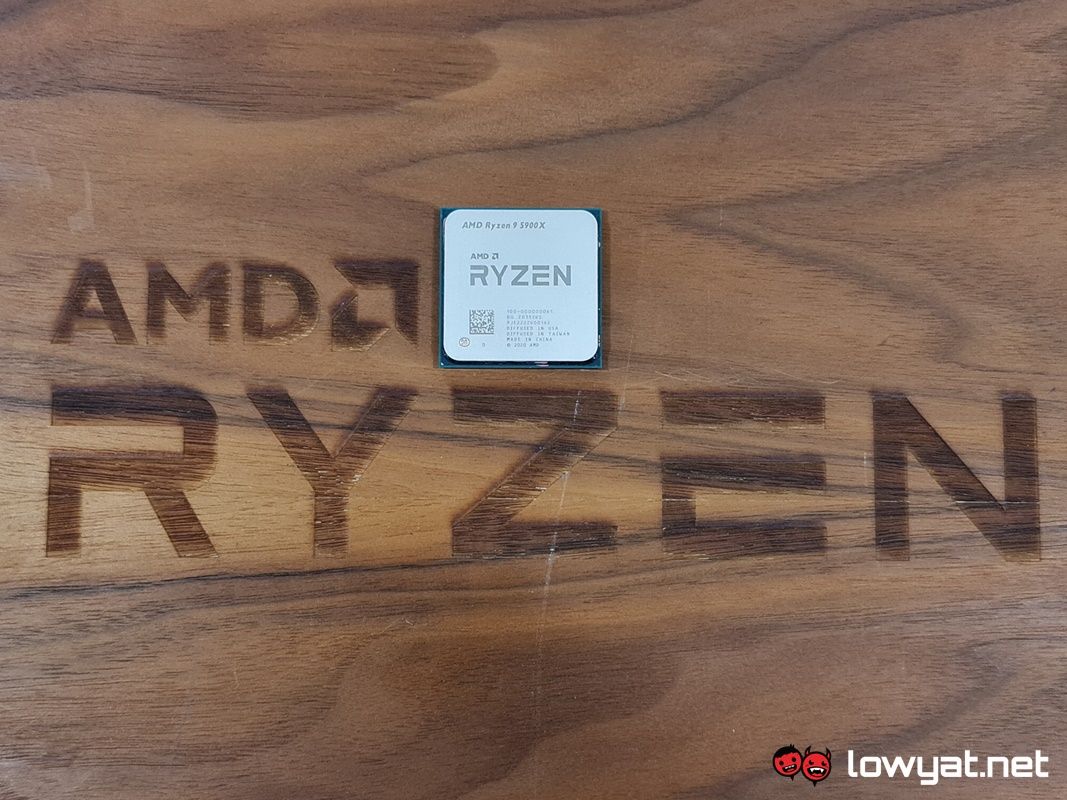
What is interesting and innovative is that, unlike Zen 2, the new Zen 3 architecture now provides users with a full 32MB L3 Cache per die, rather than splitting it into two 16MB L3 Caches. Doing this translates into a series of improvements to all CPUs under the Ryzen 5000 series lineup; for starters, each core gains access to the full 32MB L3 Cache, rather than having a set number of cores drawing from a 16MB L3 Cache, just like the CPU based on the Zen 2 architecture.
This, in turn, also reduces the “Effective Memory Latency”, which is basically just a way of saying that any tasks rendered upon the CPU Cache and memory.
Test Rig
The good news is that in order to run the new Ryzen 5000 Series CPUs, you won’t need a new motherboard. The current generation AM4 motherboards are recyclable, but because my X570 motherboard predates the arrival of the new 5900X, a BIOS update is required in order for it to post.
As for the testing methodology, I will be testing the 5900X alongside its direct predecessor, the Ryzen 9 3900X, but not 3900XT, simply because the difference between these two processors is negligible. I also managed to overclock the 5900X and keep it running at a sustained speed of 4.675GHz, with the voltage at 1.35V. Those are staggeringly impressive numbers, especially when you look back a year ago with the 3900X, when I struggled to even get it to hold at 4.4GHz and its voltage set at 1.5V.
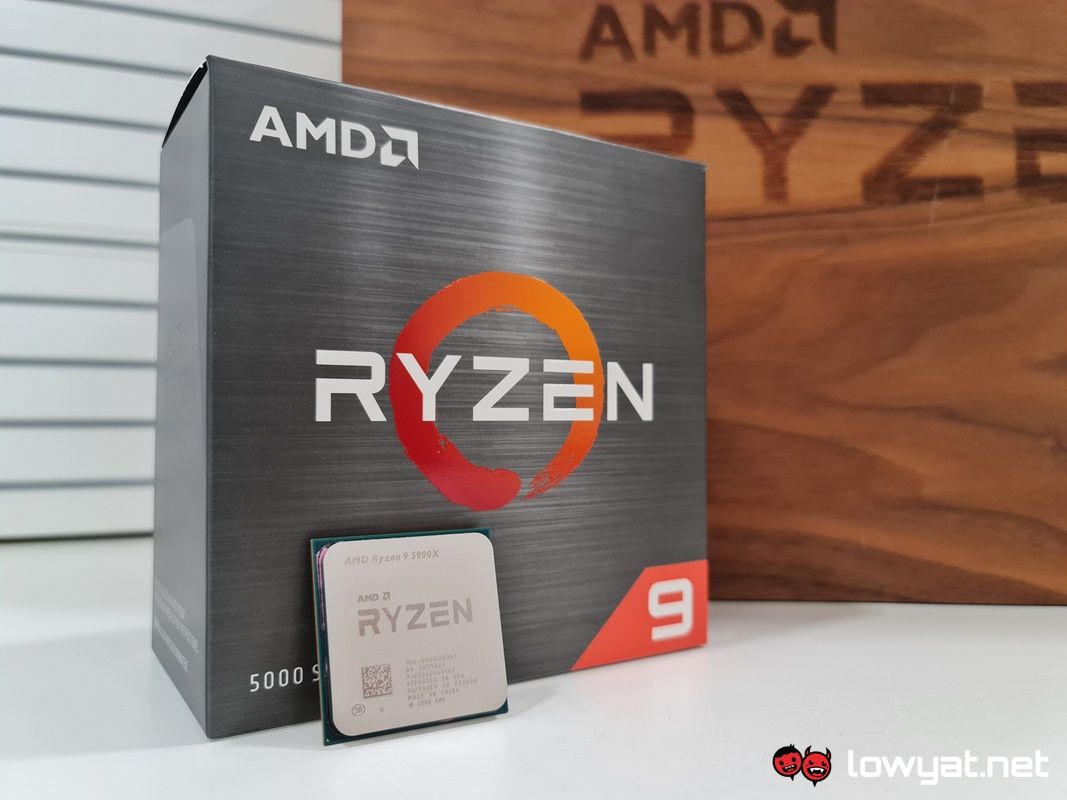
Moving on, I will also be comparing the gaming performance of both Ryzen CPUs with NVIDIA’s GeForce RTX 3080 Founders Edition at its stock settings. On another note, I’ve also swapped out my previous Thermaltake AiO cooler for a GamerStorm Castle 240EX AiO, as well as applied Thermal Grizzly’s top of the line Kryonaut Extreme thermal grease.
In regards to gaming, I’m using the same list of games that I use when benching graphics cards. Also note that the framerates listed in DXR-capable titles were obtained with NVIDIA’s DLSS uspcaling technology turned on, along with the DXR setting maxed out as well.
Benchmarks
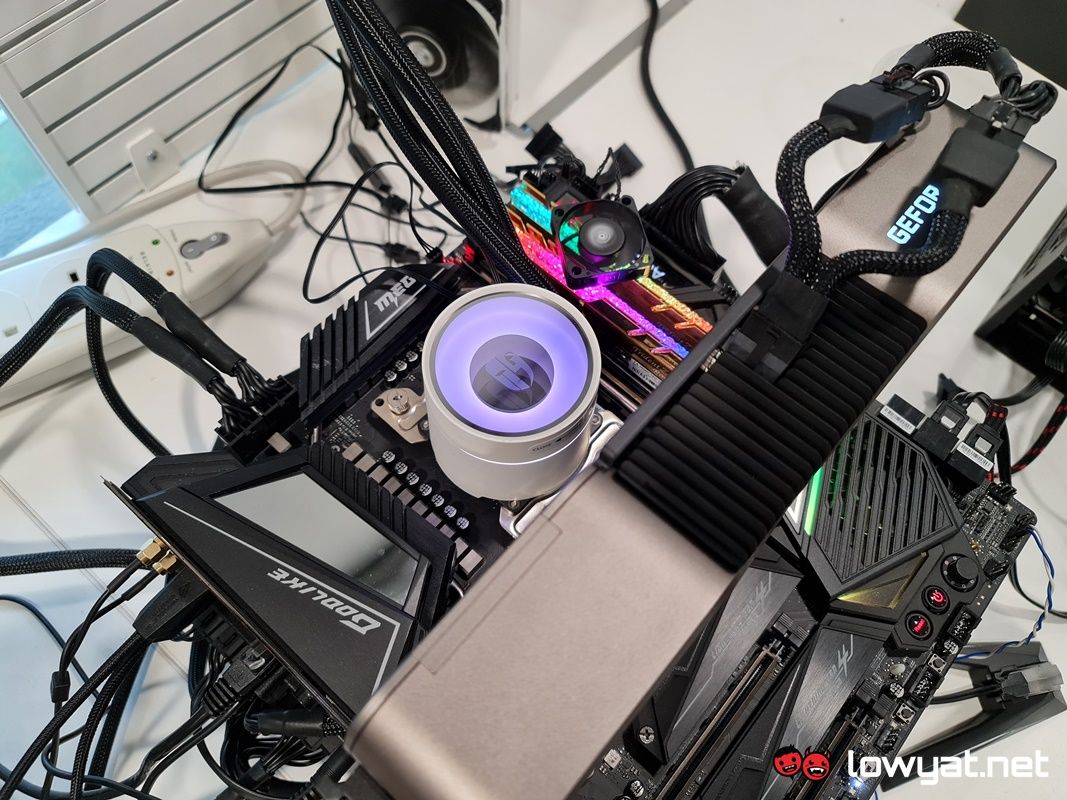
In its default state, the 5900X definitely shows improvements across the board, but what is surprising is the CPU’s gains and stability after overclocking. At 4.675GHz, the 5900X showed up to 5% performance improvement in UL’s 3DMark Fire Strike Physics tests, and approximately 8% in the Time Spy Extreme test.
The biggest jump in performance, though, can be seen in UL’s PCMark 10 Extended benchmark, where the 5900X in its overclocked state jumped from 8046 to 11241 points; that’s an approximate 40% increase and it actually caught me off guard to the point that I actually ran the test again to see if the score was consistent. To its credit the 5900X still managed to sustain a score above the 11000 mark, so this wasn’t just an anomaly.
Those same overclock performance gains can also be seen in the Cinebench R20 benchmark. Yes, AMD has already gave the world a glimpse of the 5900X’s prowess with the program during its presentation, and yes, it does break past the 600 points threshold for its single-threaded performance.
In a sustained overclocked stated, though, the story is a little different. As I gradually began pushing the 5900X, its multi-threaded performance showed the same characteristic increment, while the single-threaded score was hovering below the 600 mark. It wasn’t until I clocked it at 4.675GHz that the CPU managed to once again achieve the score of 604 points, which I find a bit strange. Considering that, out of the box, the processor has no issue pulling off more than 600 points consistently.
Gaming’s a region that’s genuinely a hit-or-miss for the 5900X, and that factor varies not just from title to title, but also with their display resolutions. In games like Battlefield V (BFV), the CPU definitely shows more consistent average framerates at 4K, both by default and overclocked. However, it’s seems that both the game and the component came to a sweet spot at 1440p, where the discrepancy between the CPU out of the box and in its overclocked state was more pronounced.
In titles such as Control, the 5900X can be seen working hard across all three resolutions and, yet again, continues to amaze with its overall performance at 4.675GHz, and in all three display resolution options.
As for titles such as DOOM Eternal, the 5900X easily nets an additional 15 to 20 fps, both at 4K and 1440p while overclocked, but clearly reached a saturation point when running in Full HD. That said, the title is a very well optimised game, and almost all cards are able to maintain high framerates with it.
Shadow of the Tomb Raider is where the 5900X showed the least gains in average framerates, both in its default and OC mode. At best, the CPU churns out less than 10 fps overall.
Temperature and Power Consumption
Initially, I expected the 5900X to run well above the 80°C market out of the box, given the speed and power it commands, but that wasn’t the case. At its peak, the CPU barely made it past the 73°C mark; a testament to AMD’s promise to deliver more performance-per-watt while retaining the same TDP, especially if you’re doing an apples-to-apples comparison with the 3900X (albeit with just a 3°C difference).
Of course, pushing it to 4.675GHz running at full whack saw the 5900X reaching close to 93°C, but to be fair, this only ever occurred while putting it through the tracks with synthetic benchmarks. On average and in games, the CPU averages 66°C with the occasional spike into the 70°C zone.
As for power consumption, there is nothing out of the ordinary to report, and the massive spike that you see in the chart above was, once again, only attained during synthetic testing and not real-world applications.
Conclusion
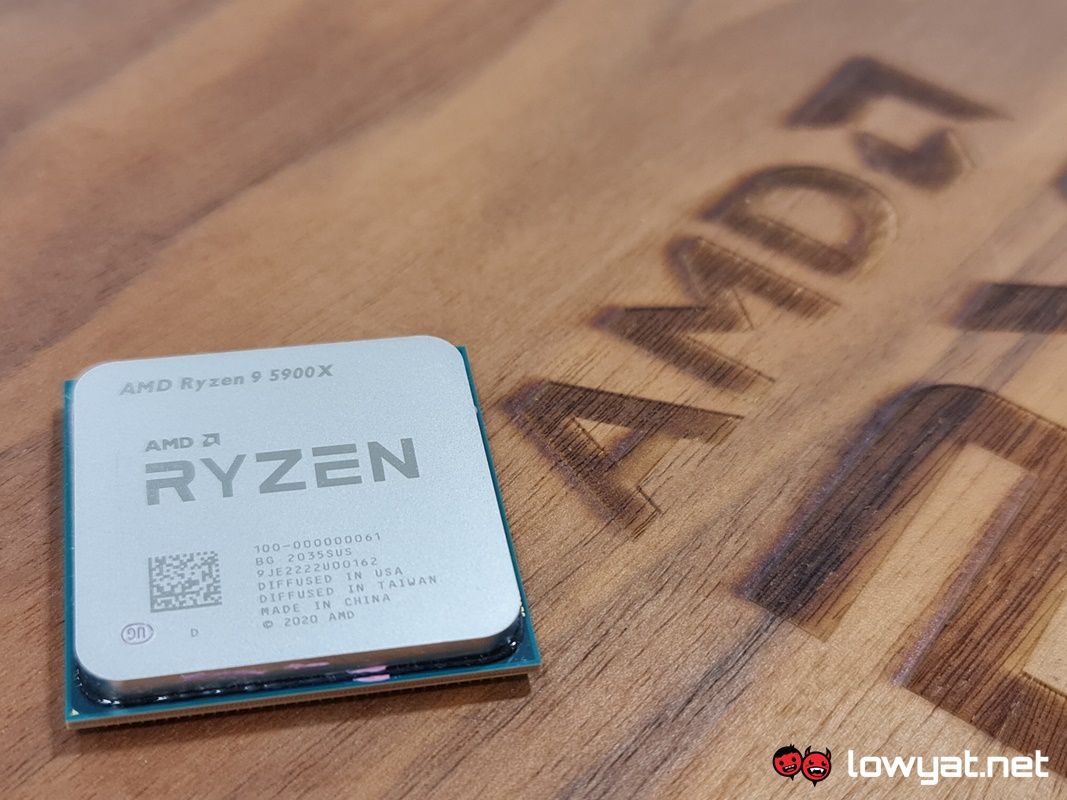
I don’t say this lightly, but when AMD said that its Ryzen 5000 series would be an improvement over the potent Ryzen 3000 series, it didn’t keep its promise, it over-delivered. In the case of the Ryzen 9 5900X, it honestly has no issue in sizing up its predecessor and when pushed nearly to the brink, it goes – to borrow the cliche – like a bat out of hell.
There is also the small issue of its price; the 5900X retails for an eye-watering RM2499, but to be fair, that price tag isn’t all that different from the 3900X and 3900XT, both of which are currently retailing at RM2099 and RM2299, respectively. Of course, the argument that can be made is that the new Ryzen 5000 series will grant you access to new features when paired with AMD’s upcoming Radeon 6000 series GPUs. That is, assuming you’re planning on building an all-AMD rig.
To that end, AMD’s Ryzen 5000 Series also serves a reaffirmation that Intel has some very large shoes to fill but as it stands, we won’t be hearing from the semiconductor maker or about its 11th Gen Rocket Lake-S desktop CPUs until next year. On another note, there’s still the Ryzen 9 5950X that I will be putting through its paces, and frankly, I’m already expecting some good things from it.
Follow us on Instagram, Facebook, Twitter or Telegram for more updates and breaking news.


